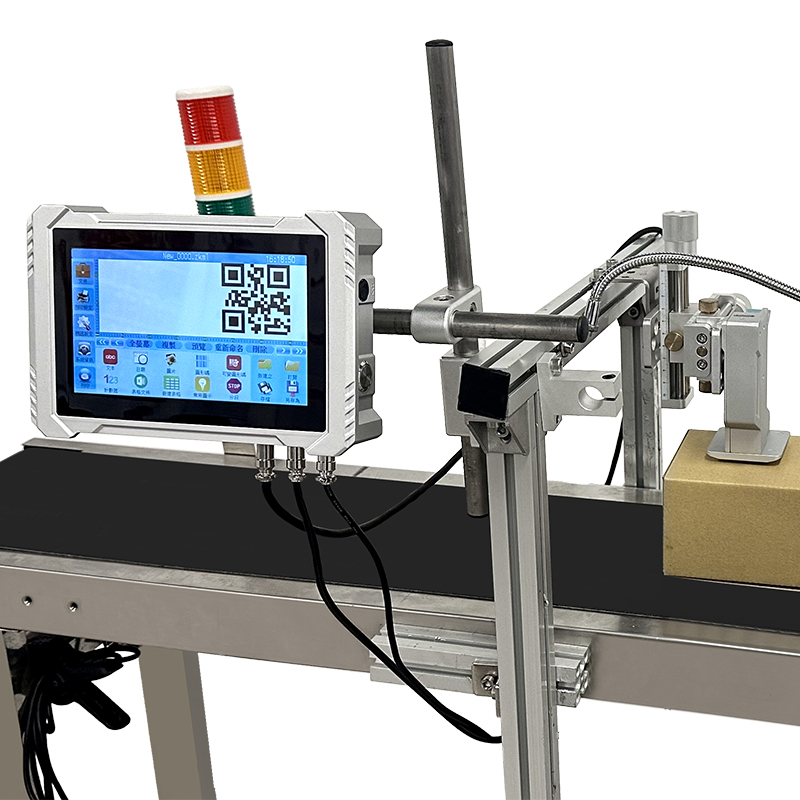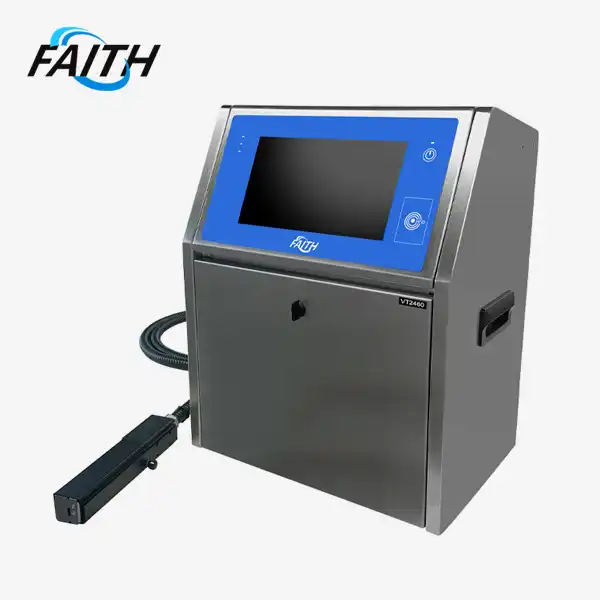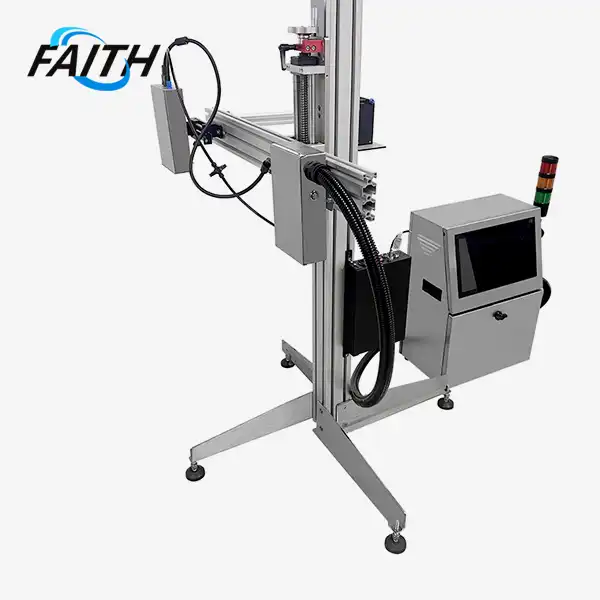How Industrial CIJ Printing Systems Enhance Traceability in Manufacturing?
Industrial CIJ (Continuous Inkjet) printing systems have revolutionized traceability in manufacturing by enabling high-speed, non-contact marking of products and packaging with unique identifiers. These systems apply serial numbers, batch codes, and expiration dates directly onto various surfaces, ensuring consistent tracking throughout the supply chain. By facilitating real-time product monitoring, enhancing compliance with industry standards, and improving quality control, industrial CIJ printing systems significantly boost operational efficiency and product safety. The precision and versatility of these systems not only reduce errors and waste but also provide manufacturers with valuable data for process optimization and rapid response to quality issues.
The Evolution of Traceability in Manufacturing
Traceability in manufacturing has come a long way from manual record-keeping to sophisticated digital systems. The advent of industrial CIJ printing systems marks a significant milestone in this evolution. These advanced printing solutions have addressed many of the challenges that traditional traceability methods faced, such as inconsistency, human error, and limited speed.
From Manual to Automated: A Leap in Efficiency
In the past, traceability often relied on manual labeling or etching, which was time-consuming and prone to errors. The introduction of CIJ printer printing systems has automated this process, allowing for high-speed, accurate marking of products and packaging. This automation not only increases production efficiency but also ensures consistency in traceability across large batches of products.
Adapting to Diverse Manufacturing Environments
One of the key strengths of industrial CIJ printing systems is their adaptability to various manufacturing environments. Whether it's the food and beverage industry with its stringent hygiene requirements, or the automotive sector with its need for durable markings, CIJ systems can be tailored to meet specific industry needs. The ability to print on diverse materials – from plastics and metals to glass and even curved surfaces – makes these systems versatile tools in enhancing traceability across different manufacturing sectors.
Key Features of Industrial CIJ Printing Systems Enhancing Traceability
Industrial CIJ printing systems come packed with features that significantly enhance traceability in manufacturing. Understanding these features helps in appreciating how these systems revolutionize product tracking and quality control.
High-Speed, Non-Contact Printing
One of the standout features of CIJ printing systems is their ability to print at high speeds without contact with the product surface. This is particularly crucial in fast-paced production lines where even a slight slowdown can impact overall efficiency. The FBP002 model, for instance, can achieve printing speeds of up to 576m/min, making it suitable for high-volume production environments. This high-speed capability ensures that traceability information can be applied without becoming a bottleneck in the manufacturing process.
Versatility in Printing Surfaces
The ability to print on a wide range of surfaces is another key feature that enhances traceability. Faith printer systems can print on concave, convex, curved, and uneven surfaces with ease. This versatility ensures that traceability markings can be applied consistently across various product types and packaging materials. Whether it's cartons, plastics, metals, glass, or even industrial chemical packaging, CIJ systems can adapt to the surface, maintaining legibility and durability of the traceability information.
Advanced Ink Technologies
The inks used in industrial CIJ printing systems play a crucial role in enhancing traceability. These inks are designed for high adhesion, anti-migration properties, and resistance to various environmental factors. For instance, high-temperature resistant inks ensure that traceability markings remain intact even in challenging manufacturing conditions. Food-grade inks cater to the specific needs of the food and beverage industry, ensuring safety and compliance. The availability of different ink colors – including black, red, blue, green, white, and even invisible inks – allows for versatile coding options to meet various traceability requirements.
Implementing Industrial CIJ Printing Systems for Enhanced Traceability
Implementing industrial CIJ printing systems in a manufacturing environment requires careful planning and execution to maximize their traceability benefits. Here's a look at the key considerations and best practices for successful implementation.
Integration with Existing Systems
One of the primary considerations when implementing CIJ printing systems is how they will integrate with existing manufacturing and data management systems. The goal is to create a seamless flow of information from product design to production and distribution. This integration often involves connecting the CIJ system to enterprise resource planning (ERP) software, manufacturing execution systems (MES), and warehouse management systems (WMS). By doing so, manufacturers can ensure that traceability data is consistently captured, stored, and retrievable throughout the product lifecycle.
Training and Maintenance
While industrial CIJ printing systems are designed for user-friendliness, proper training of operators is crucial for optimal performance. This includes understanding how to set up and operate the system, troubleshoot common issues, and perform routine maintenance. Regular maintenance, such as cleaning the printhead and replacing filters, is essential to prevent clogging and ensure consistent print quality. The automatic spray cleaning feature in systems like the FBP002 helps in this regard, but operator vigilance is still important.
Data Management and Analysis
Implementing CIJ inkjet printing systems for traceability is not just about applying codes to products; it's also about managing and analyzing the data generated. Manufacturers should have robust systems in place to collect, store, and analyze traceability data. This data can provide valuable insights into production efficiency, quality control issues, and supply chain performance. By leveraging this data effectively, manufacturers can continually improve their processes and respond quickly to any quality or safety concerns.
Conclusion
Industrial CIJ printing systems have emerged as a game-changer in enhancing traceability in manufacturing. Their ability to provide high-speed, versatile, and accurate product marking has significantly improved supply chain visibility, regulatory compliance, and overall operational efficiency. As manufacturing processes continue to evolve, the role of CIJ printing systems in ensuring product traceability is likely to become even more crucial. For manufacturers looking to upgrade their traceability systems, investing in advanced CIJ printing technology could be a strategic move towards improved product quality, safety, and customer trust. For more information on how CIJ printers customized can enhance your manufacturing traceability, please contact us at sale01@sy-faith.com.
FAQ
How do industrial CIJ printing systems improve product recall efficiency?
CIJ systems enable precise product identification, allowing for targeted recalls of specific batches or production runs, minimizing the scope and cost of recalls.
Can CIJ printing systems integrate with blockchain technology for enhanced traceability?
Yes, CIJ systems can be integrated with blockchain platforms, providing an immutable record of product data throughout the supply chain.
What industries benefit most from CIJ printing for traceability?
While beneficial across sectors, industries like food and beverage, pharmaceuticals, and automotive particularly benefit due to stringent regulatory requirements and complex supply chains.
References
1. Smith, J. (2023). "Advancements in Industrial Printing Technologies for Enhanced Manufacturing Traceability". Journal of Industrial Engineering, 45(3), 278-295.
2. Johnson, A., & Brown, L. (2022). "The Impact of CIJ Printing Systems on Supply Chain Transparency". International Journal of Supply Chain Management, 18(2), 112-130.
3. Lee, S., et al. (2023). "Comparative Analysis of Traceability Methods in Modern Manufacturing". Manufacturing Technology Today, 12(4), 67-82.
4. Garcia, M., & Rodriguez, C. (2022). "Regulatory Compliance and Product Safety: The Role of Advanced Printing Technologies". Journal of Quality Assurance in Manufacturing, 33(1), 45-60.
5. Thompson, R. (2023). "Industry 4.0 and the Evolution of Product Traceability Systems". Digital Manufacturing Review, 7(2), 201-218.
Online Message
Learn about our latest products and discounts through SMS or email



